Searching for James

Caramor - sailing around the world
Franco Ferrero / Kath Mcnulty
Thu 16 Nov 2017 02:19
22:49.52S 67:46.45W The salt flat had been fun (we had spent most of the time staging silly photos), next on the itinerary was the area Franco and I were most interested in; the Eduardo Avaroa Andean Fauna National Reserve. We were keen to see the pink flamingoes that breed in this inhospitable environment, in particular the rare and endemic James’s flamingo. As we set off the next morning, we passed a herd of vicuñas and wondered what forage they were able to find in such an arid landscape. The sighting prompt Javier to tell us a joke. He asked us if we knew how the llama got its name. We didn’t. He explained: “The Quechuan word for ‘llama’ is ‘Q’kaura’. When the first Spaniards arrived, they pointed at the strange mammals with long necks. “Como se llama? (What are those called?)” They asked. “Q’kaura.” Replied the natives. “Q’-WHAT?” Queried the Spaniards, unable to pronounce the word. Weeks later, the Spaniards still couldn’t say the word and the natives were becoming bored of repeating it, so the next time one of the invaders asked: “Como se llama?” They replied: “Se llama ‘llama’.” And that is how the llama got its name.” 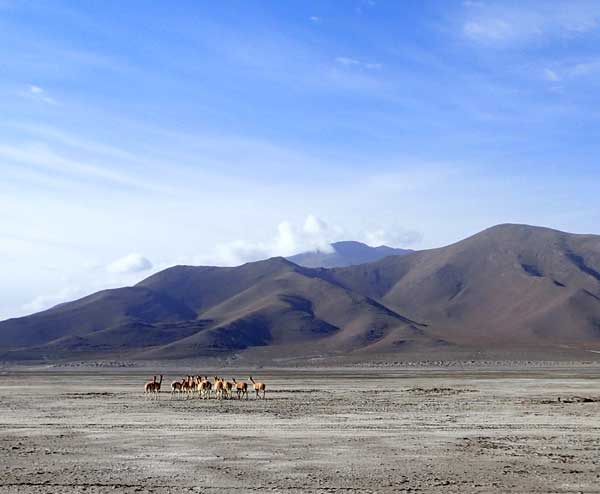 A herd of vicuña (the wild and smaller version of the llama) We stopped at a public toilet in the desert. Javier explained that the water was brought by lorry from thirty kilometres away and not surprisingly the fee to use the facility was exorbitant. I wandered over to chat with the attendant as I was curious. “Excuse me, could you tell me how much water is needed per year?” “It’s been open just over a month, and uses 1,200 litres per day.” I was shocked, so much water wasted in a place that has none. At last we arrived at the first salt lagoon and our first flamingos. I sidled up to another group who were listening to the guide talking about the flamingos. According to him, the larger birds were Andean flamingos, the smaller ones Chilean and the two white over to one side were the rare James’s flamingo. 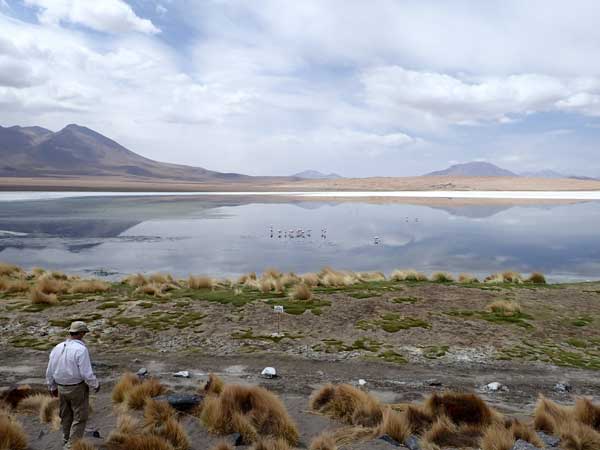 Franco arriving at the first salt lagoon “Hey Franco, the white ones are James!” I whispered excitedly. “No they’re not, those are juveniles.” Franco was right.  White flamingos Back at our Land Rover, we asked Javier. “James has a yellow beak,” he told us. Salt lake after salt lake, we scanned the water looking for the elusive flamingo with a yellow beak. We only ever saw two types; large flamingos with muddy yellow legs and slightly smaller birds with a yellow and black beak.  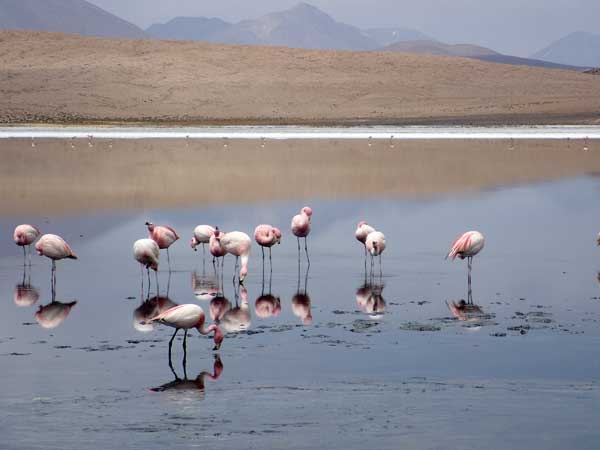 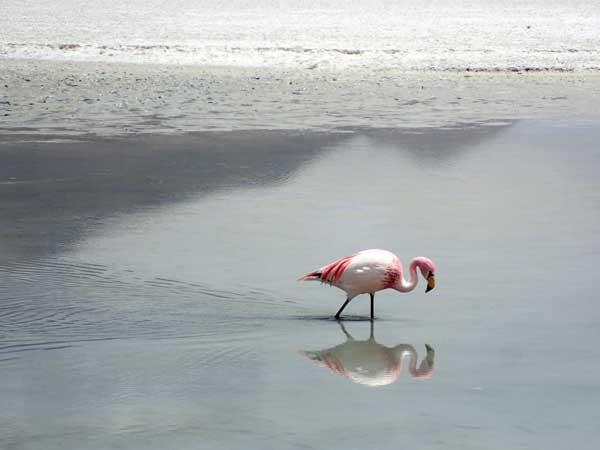 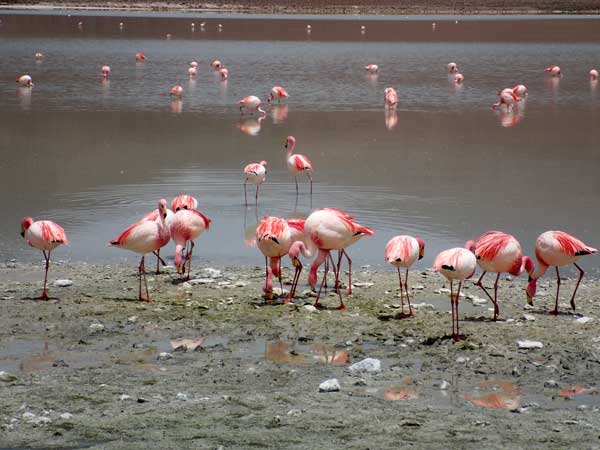 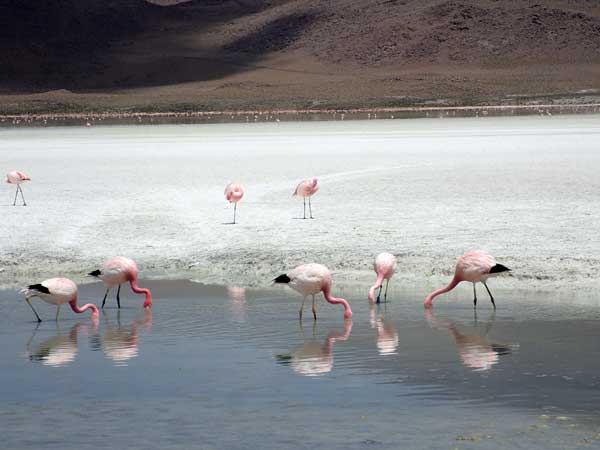 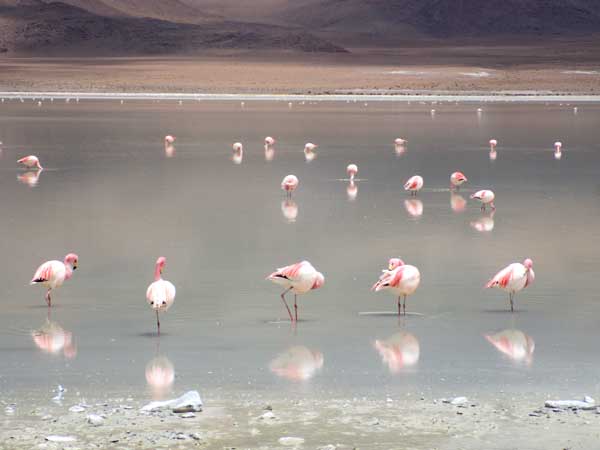  Flamingos on Laguna Colorada It was becoming an obsession, we nearly missed lunch, we were always the last back to the vehicle as we walked miles to check out yet another group of birds. In the end we had to give up, we hadn’t seen James. Or so we thought … 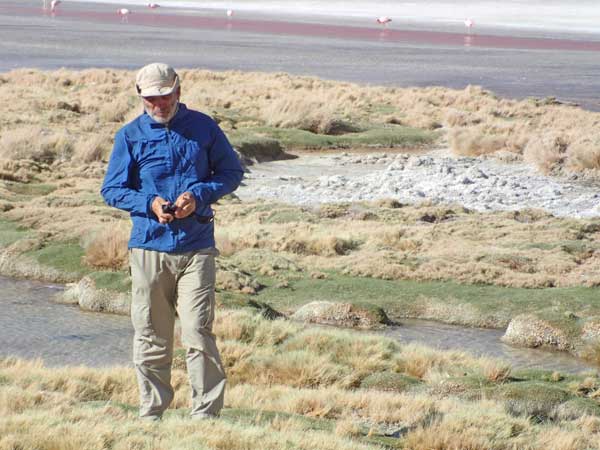 A disappointed Franco putting his binoculars away |